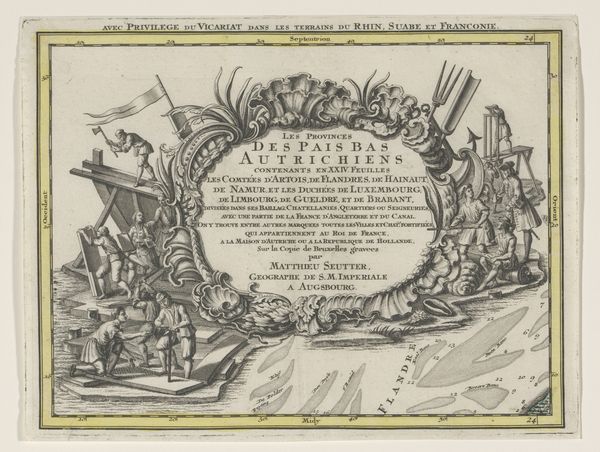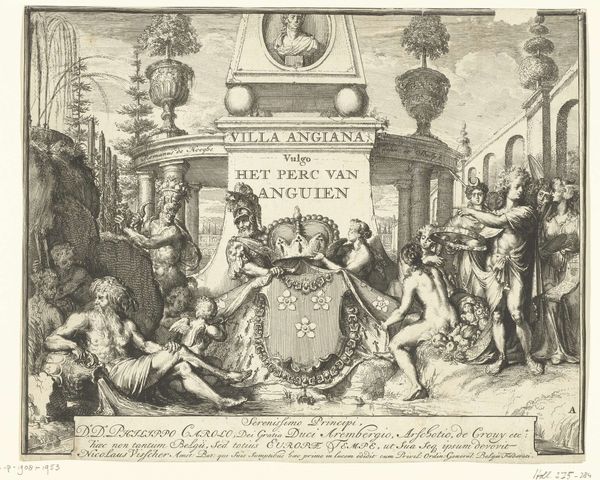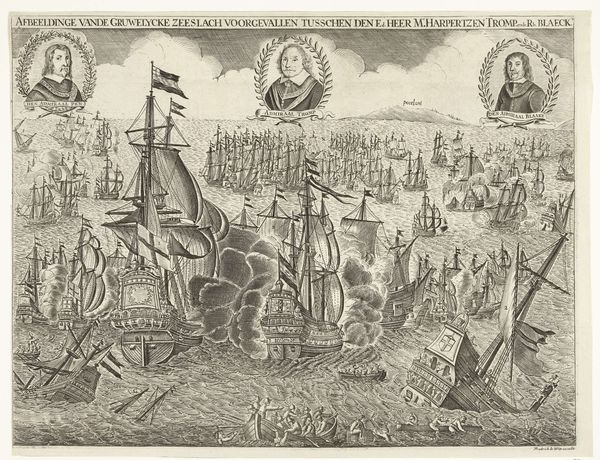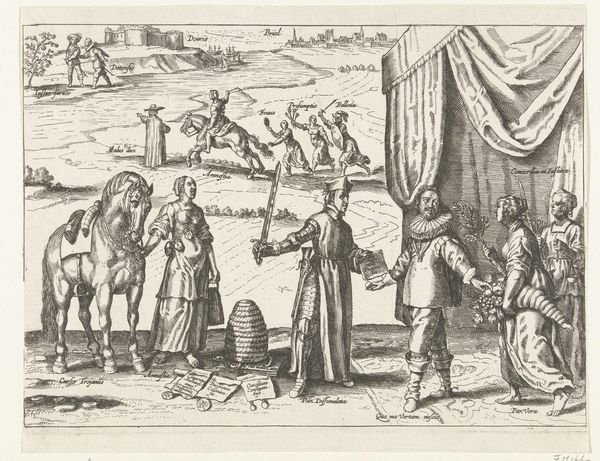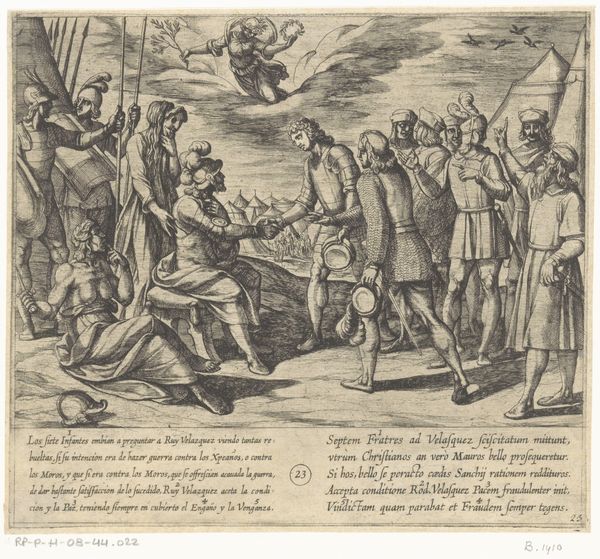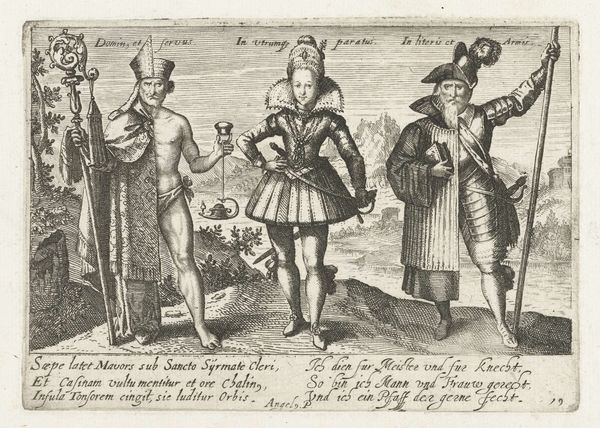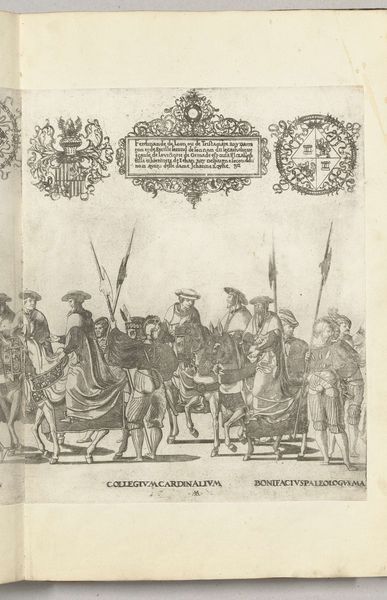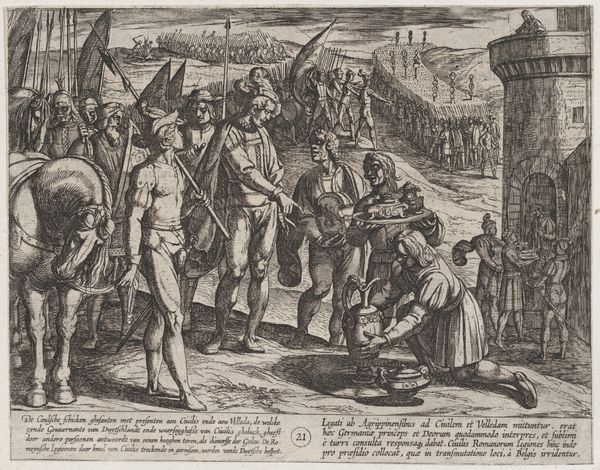
Dimensions: height 148 mm, width 175 mm
Copyright: Rijks Museum: Open Domain
Curator: Let’s take a look at this 1768 print, "Schuttersbriefje voor Willem Hendrik Warnsink," crafted by Jan van Jagen, using engraving and ink. It appears to be a recruitment notice or certificate for a civic guard member. Editor: It has quite a grand, theatrical feel, doesn't it? Dense with figures, objects, and that symbolic backdrop. The figures exude such confidence but they are juxtaposed with the somewhat crammed lettering and heraldry. It's busy, but compelling. Curator: Absolutely, the production process here is interesting. These schutterstukken, or militia portraits, became prints used to signal power and order. There’s an interesting contrast to the handcrafted element in the linear hatching and the industrial intent of reproduction on the page. Also, the presence of lettering directly intertwined in the pictorial scene means that it needed very skilled artisans to translate it. Editor: Yes, you can see the function influencing the form, in the portrayal of civic duty, and a reminder of the militaristic structure within Dutch society. The image suggests an ideal of citizenship bound to protection of commerce. And in many ways it embodies masculine values and societal roles during that period. Curator: Notice the assortment of arms – swords, pikes, muskets – alongside the barrel, and other objects suggestive of commerce. The etching process really renders all this hardware meticulously; creating the visual promise that it will keep civic space, and, of course, trade, safe. It presents itself as the best way to fulfill your civic role. Editor: I can see that, although to contemporary viewers the depiction of these officers might come across as rather stereotypical representations of patriarchal power structures of 18th-century Dutch society. This work could become a powerful visual marker in examining broader questions of national identity and power during that time. Curator: The artist uses line to achieve great variation. It draws our attention not only to wealth and armament, but also to the labor behind production of it all, thus placing emphasis on societal power constructs. Editor: Agreed. It brings into focus questions of collective memory and ongoing reinterpretation as we continue engaging with these images, offering new understandings about Dutch society and the individuals that comprise it.
Comments
No comments
Be the first to comment and join the conversation on the ultimate creative platform.


